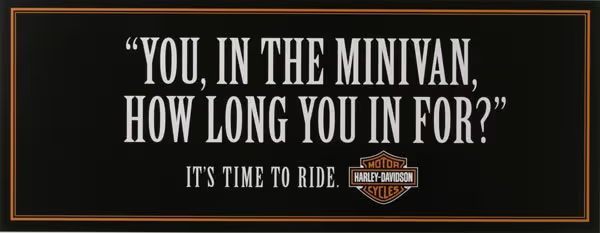Growth Newsletter #261
Have you ever been on set at a video shoot? Like, a legit commercial production?
If so, you probably marveled at all the moving parts and pieces and people. Not to mention the price tag (likely six figures for a polished 30-second spot).
That’s been the reality forever. Until Kalshi ran an ad that aired during the NBA Finals made entirely with AI by one person in two days.
Just like Gutenberg’s printing press gave thinkers a way to spread ideas without owning a whole printing house, new AI video tools are giving marketers a way to make videos without a production studio.
Up until a few weeks ago, polished video assets were a crown jewel reserved for big brands and enterprises. Now? Any brand can compete.
Let’s dive into how you can capitalize on AI video for your business, and how you can create your own broadcast-quality video ads this week.
Gil Templeton
Creative Director @ BrandBossHQ
Demand Curve Guest Writer
This week's tactics
How AI video impacts founders, growth marketers, and startup execs
Insight from Gil Templeton—Creative Director @ BrandBossHQ
High-production video is no longer just for giants with million-dollar media budgets. AI has collapsed the cost, time, and overall hassle of video creation, giving lean teams the power to punch way above their weight. What used to take a quarter can now happen over a weekend, and the results can be just as effective when done right.
- You can now iterate and test video ad creative (not just static) without waiting on agencies, shoots, or post-production delays.
- Brand storytelling is back on the table for teams who couldn’t previously afford the polish required to make it feel legit.
- It’s easier than ever to stand out in noisy channels like TikTok and YouTube with content that looks like it came from a studio, not an iPhone.
What does traditional video production (sans AI) look like?
Obviously video production can be done at any budget, from person-talking-to-iPhone all the way up to a feature film. But let’s look at what a brand might need for a somewhat-polished 30-second pre-roll video ad with human talent:
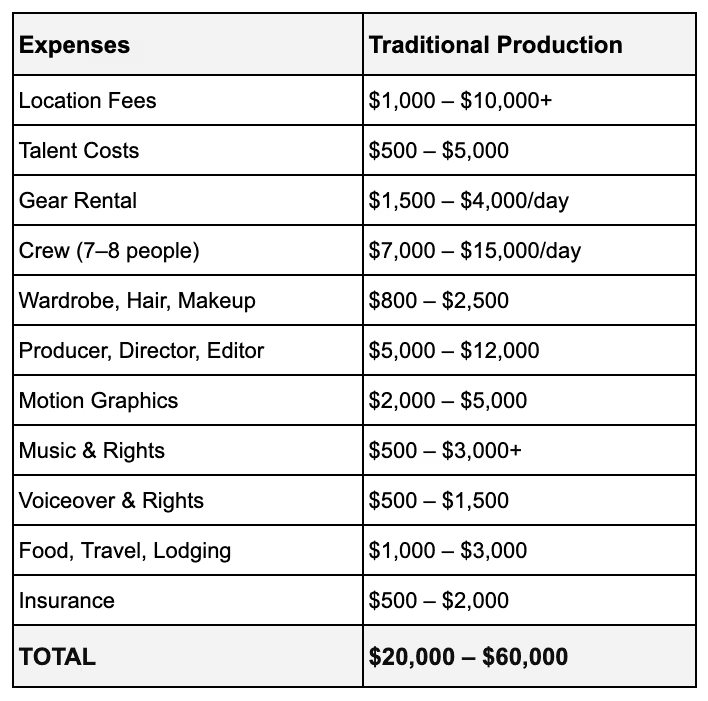
There’s a crazy amount of expense and effort that goes into this process — especially when results may vary. And while having a high-production brand video can perform well, it might not “outperform” assets produced on way scrappier budgets.
The new economics of AI video production
Case Study: How the Kalshi video was made
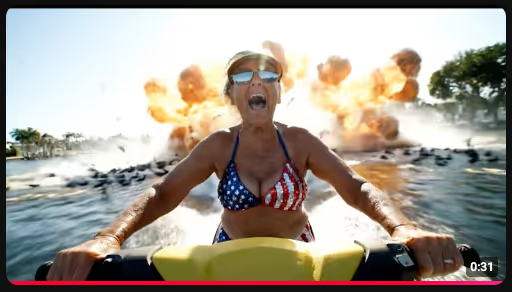
Let’s take a look at what went into making the Kalshi ad referenced earlier. Again, this aired during the 2025 NBA finals. Here’s a great quote from PJ Accetturo, the self-proclaimed “AI filmmaker” who was hired to make the ad:
“It was aired on TV, alongside $400K+ 2-month-long productions, and this took me 2 days, costing a lot less. But most importantly, I got to stay in my underwear for the entire shoot.”
In PJ’s blog post about making the ad, he casually reveals his process. Basically, he:
- Writes a rough script
- Uses Gemini to convert it into a shot list
- Runs the prompt through Google Veo 3 on Flow
- Selects the outputs that meet his standard/vision
- Then edits the sequence using a common video-editing software.
A couple days. About $2,000 in AI video credits. One talented dude working from home. Compare that to the headaches of typical video production, and the case becomes compelling quickly. In the same blog, Accetturo makes a prediction about where things might be headed:
“The future is small teams making viral, brand-adjacent content weekly, getting 80 to 90 percent of the results for way less.”
While the ad is chaotic and imperfect, it’s proof that companies can make broadcast ads (and lower-stakes videos) with AI tools instead of traditional production studios. This is a massive opportunity for emerging and challenger brands looking to steal attention from more established category players.
You can debate the quality of the ad (and point out that it clearly looks AI-generated), but you can’t debate the earned media coverage and economic efficiency of the spot. Just search “Kalshi Ad” on Google and you’ll see the splash of earned media attention the ad generated.
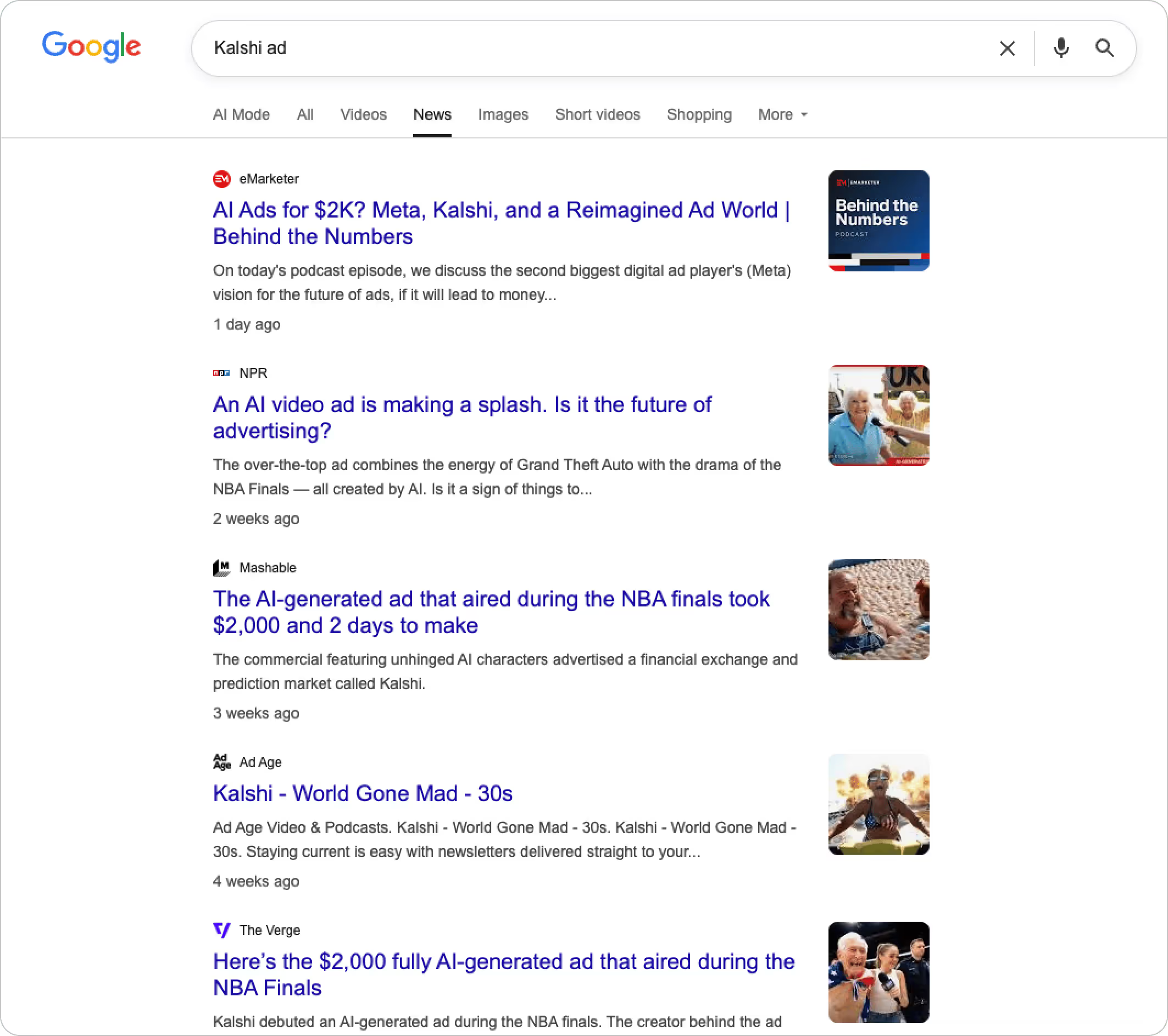
AI Video Showdown: Sora vs. Midjourney vs. Veo
Let’s break down three common video-generation platforms so you can understand which might be best for your style of video. Depending on your subject matter (ex. beautiful light-motion product shot vs. introducing a talking mascot) your choice of platform can make all the difference.
OpenAI Sora
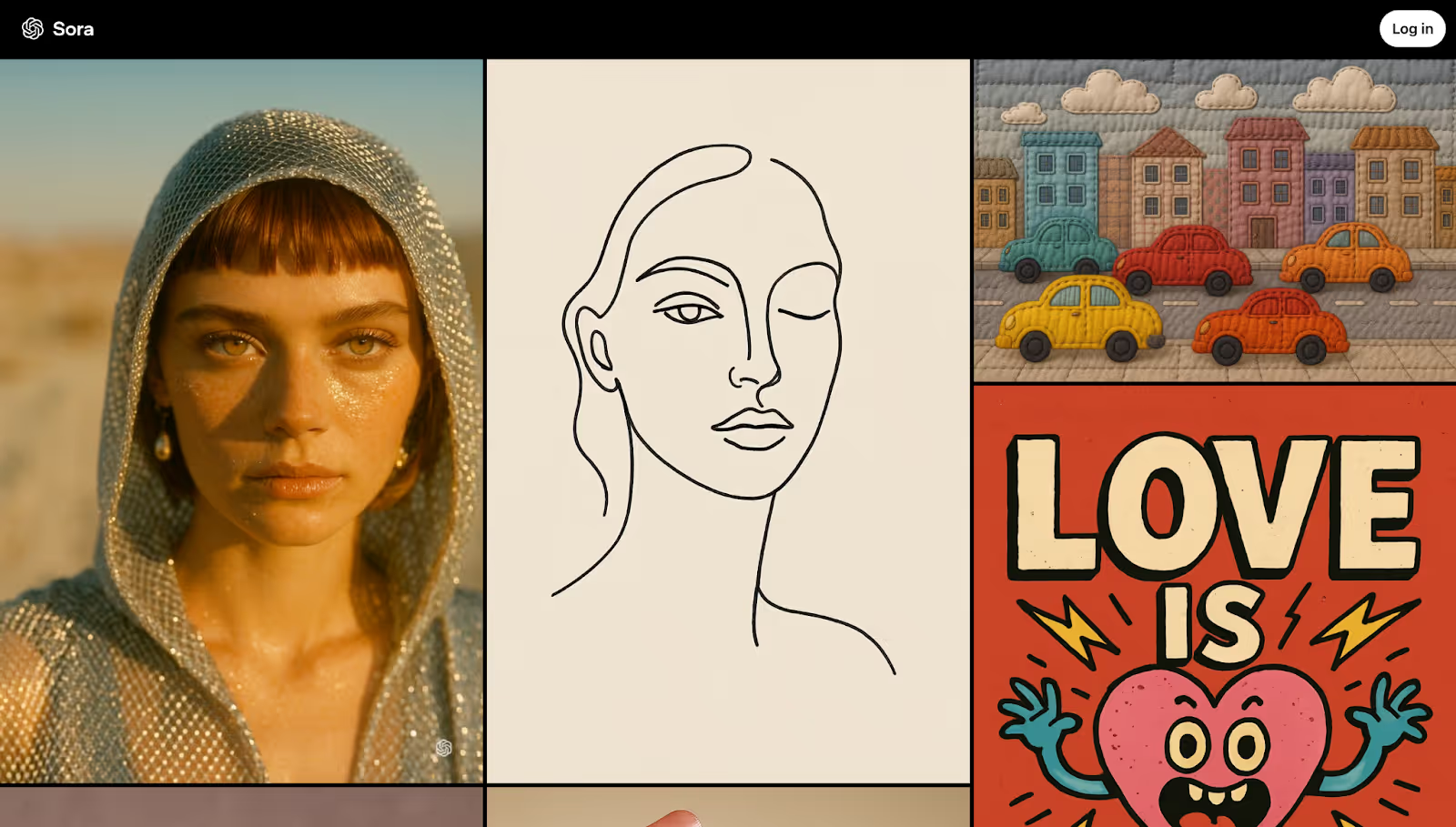
Strengths: Sora excels at generating realistic, physics-aware scenes with cinematic lighting and fluid motion, all inside longer-form (up to 60 seconds) clips. Its deep integration with ChatGPT makes it perfect for prompt-driven storytelling.
Best for:
- Captivating product shots in vivid settings
- Mood pieces for lifestyle or mission-driven brands
- Explainers using metaphor-heavy visuals
- Preserving real details of a product throughout shots
- Creating environmental stills that you can later add motion to
Midjourney Video (V6.0+)
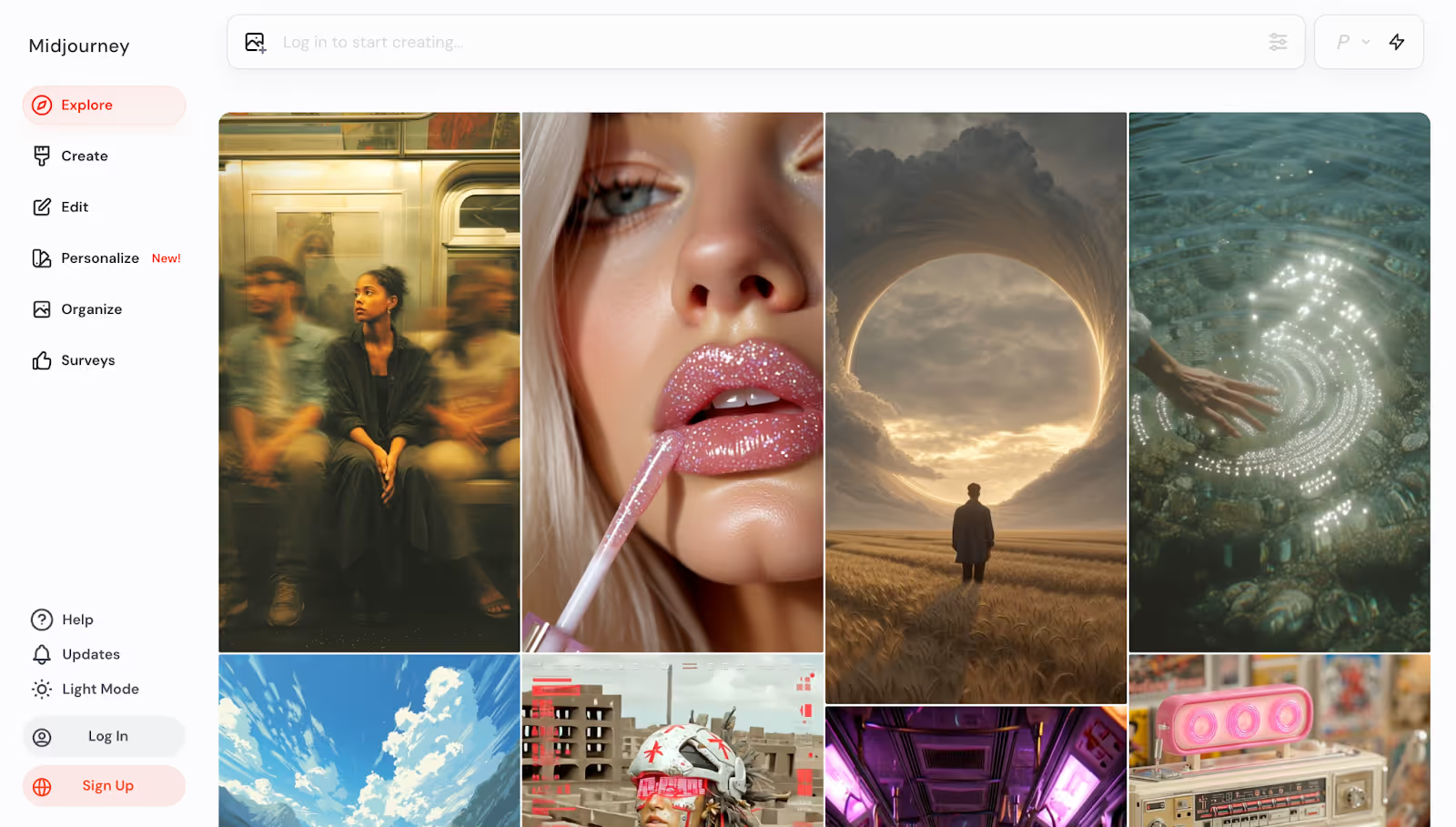
Strengths: Midjourney’s video output leans hyper-stylized, with dreamlike textures, bold motion, and painterly effects. It’s lightweight and faster than the rest, ideal for bold creative that doesn’t rely on realism.
Best for:
- Social-first, scroll-stopping visuals
- Brand identity loops for video intros, banners, and reels
- Abstract, dreamy, or hyperreal visuals
- Product mood reels (ex. luxury perfume ad in abstract fog)
Google Veo 3
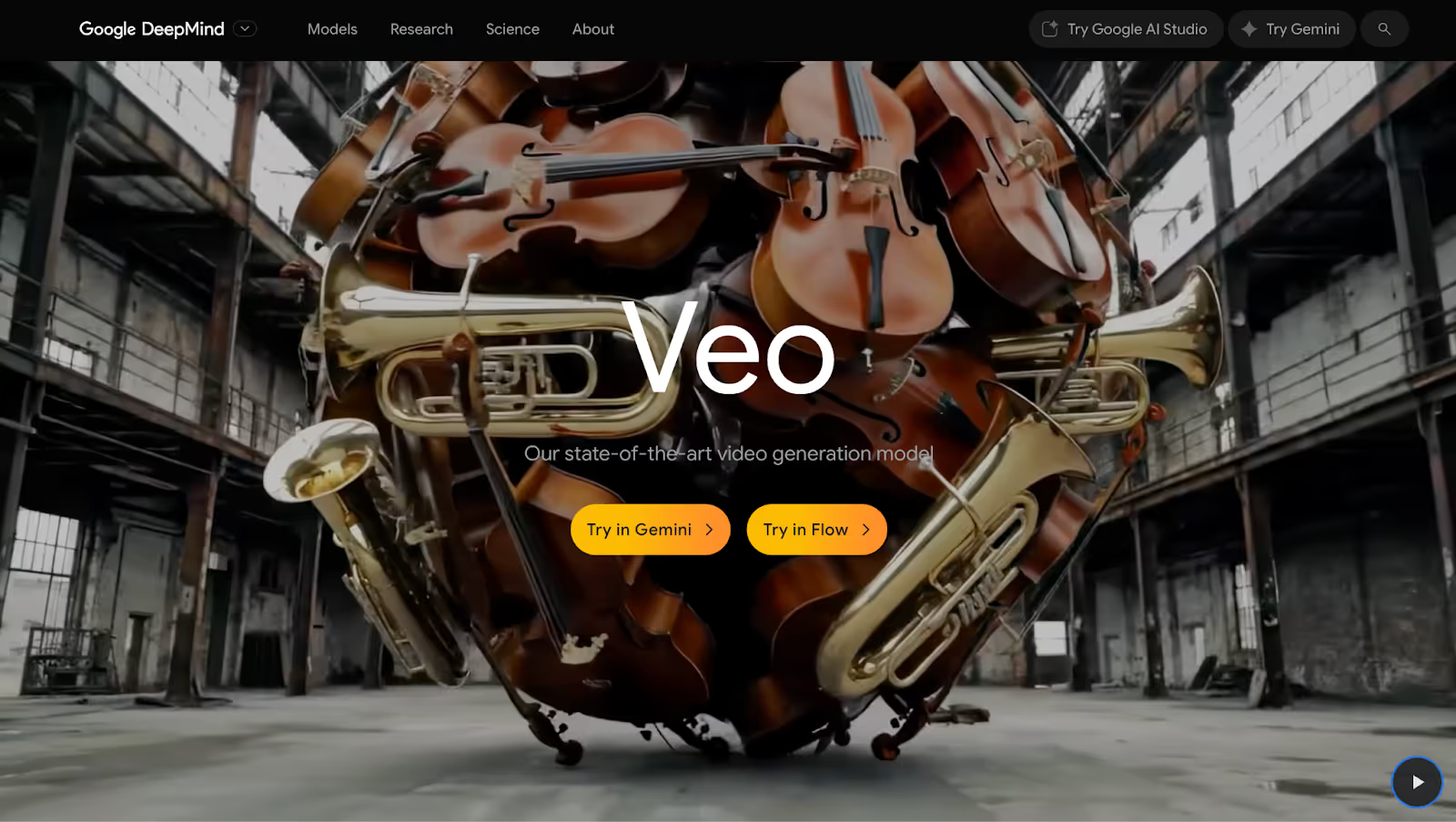
Strengths: Veo 3 delivers polished, photorealistic footage with cinematic camera moves, sharp details, and high resolution, making it the most production-ready tool of the bunch. Best for realistic shots with people, and its frame-to-frame capability adds a useful layer of control.
Best for:
- Polished ad spots that mimic agency-level work
- B-roll libraries to elevate decks, ads, or site content
- Quick-cut trailers or brand intros
- Funny or absurd character-based scenes
Note: We know, there are other video generation platforms out there…Kling, Runway ML, Higgsfield, (and countless AI UGC tools). Each has their benefits and tradeoffs. Here’s a more comprehensive list.
Where do things go from here?
For brands and businesses looking to embrace AI-generated video, here are some informed predictions about the trends and changes we’ll see in the near future.
“Close enough” becomes enough
While AI video opens up tons of possibilities that aren’t feasible on traditional production budgets, it’s still hard to get it just right. For companies who can handle their product looking a little distorted at times or an unnatural gesture from a character, AI will scratch the video itch. For those seeking perfection or complete control, traditional production has the upper hand, for now.
Not a believer yet? Don’t forget how far video AI can progress in a single year.
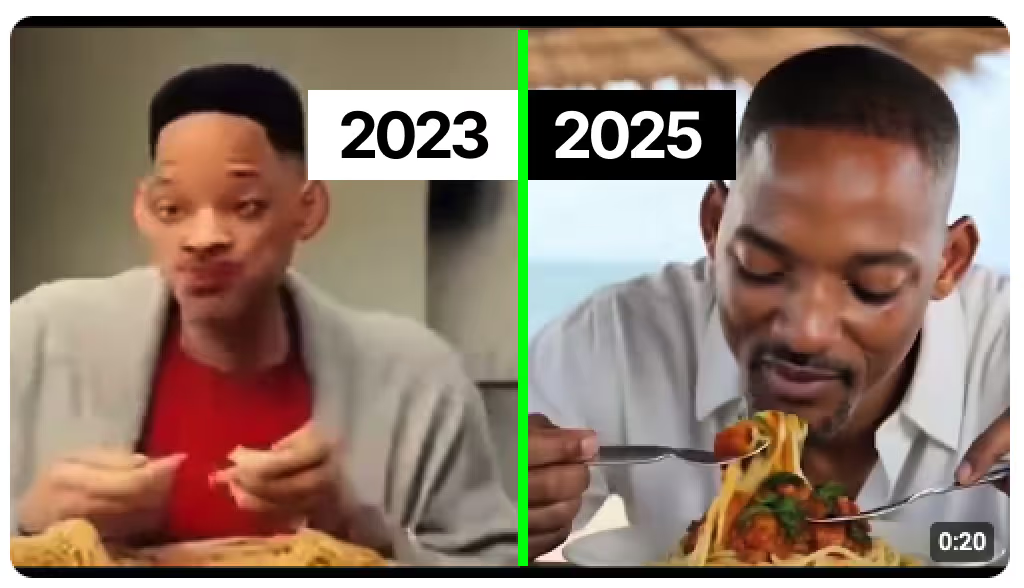
Niche comedy social accounts
Whether it’s an Instagram account like @alexlexobx1 that leans into the shared experiences and inside jokes of a community like the NC Outer Banks, or a slew of political-leaning TikTok handles spoofing the other party’s apparent hypocrisy, absurd comedy is an easily repeatable, occasionally viral formula for AI video (and AI image) generation.

A numbers game
It’s becoming less about creating perfect pieces of art and more about creating as many assets as possible with the chance one or two in the batch will gain traction. Entrepreneurs and Vtubers like Bloo (who has 2.5M Youtube subscribers) are leveraging AI to create low-effort clips, sometimes up to 80 per day. While critics will call it classic “AI slop,” view counts and occasional virality are showing the potential of a volume-based video approach.
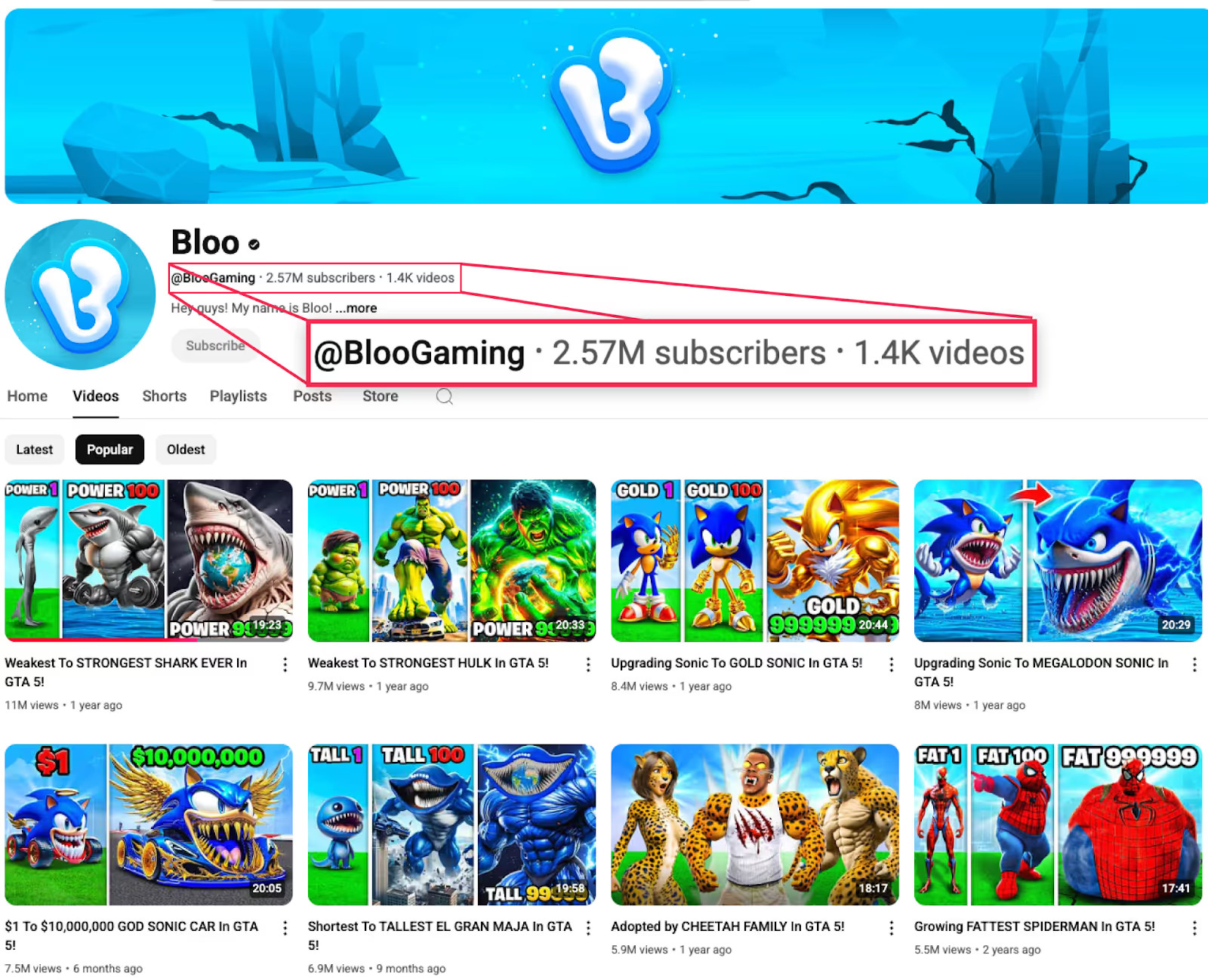
The bottom line
AI video still has its quirks, but you'd be wise to start testing because six months from now (let alone a year from now) your control over consistency and realism in AI video will likely be 10x what it is now.
The tools are ready. The gap between big budgets and bootstrapped teams just disappeared. So what are you waiting for?
Time to start shipping.
Gil Templeton
Creative Director @ BrandBossHQ
Demand Curve Guest Writer
P.S. Check out my portfolio if you're interested.







